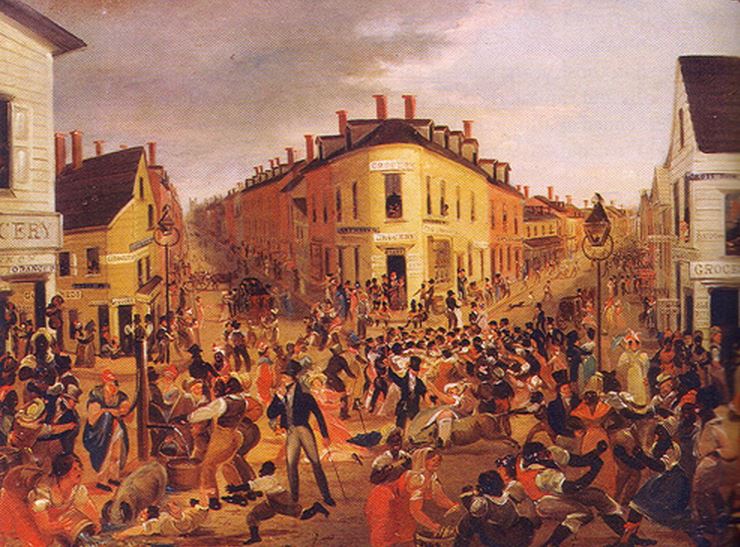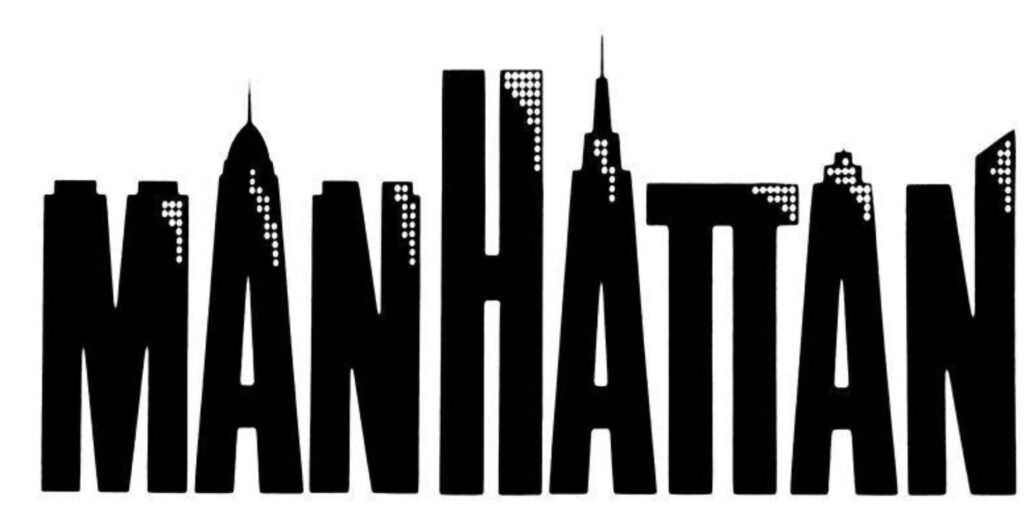Gangs of the Infamous 19th Century New York Five Points
By Manhattan Historian and Tour Guide Joyce Gold
Martin Scorcese’s movie Gangs of New York focuses on a once notorious mid-19th century part of New York City: the infamous Five Points in Manhattan’s Lower East Side. Named for a 5-point intersection (that no longer exists) it was the first slum in the city, filled with the poorest of the poor, particularly tens of thousands of immigrants who fled the Irish potato famine.
Residents joined into street gangs such as the Chichesters, Bowery B’hoys, Dead Rabbits, Plug Uglies, Kerrionians, and Shirttails. Some of these gangs were comprised of immigrants; others violently opposed to immigrants.
The Five Points is alleged to have had the highest murder rate of any slum at that time in the world.

Painted by George Catlin 1827
Metropolitan Museum of Art, New York
The Five Points was a 19th century must-see tourist attraction.
American folk hero and, ‘King of the Wild Frontier’ Davy Crockett; was there. His reaction, “I would rather risk … an Indian fight than venture among these creatures after night.”
Novelist Charles Dickens wrote, “Squalid streets…leprous houses…reeking everywhere with dirt and filth…. All that is loathsome, drooping and decayed is here.”
But presidential candidate Abraham Lincoln had a different view. About the Sunday school children he visited he commented, “They inspired me. I’ll never forget this as long as I live.”
Danish immigrant Jacob Riis helped improve the district, in part by getting the city to rip out some of the worst buildings and replace them with small parks which remain as lasting results that came out of the Five Points.
Highlights of my tour of the 5 Points neighbourhood includes the site of a brewery once converted into a miserable residency for 1,000 people where it is said that there was a murder every night for 15 years until it was demolished in 1852. Also a residence circa 1785 originally for a wealthy purveyor of meat and race horses, and the current identity of the neighborhood. Other tour highlights include the first Baptist congregation of New York and the twisting streets of old Chinatown.
We visit the 3rd oldest church in Manhattan, an excellent example of accommodating the changing city. The Church of the Transfiguration switched from Lutheran to Episcopalian. It converted to a Roman Catholics parish founded by a Cuban revolutionary, primarily for Irish Catholics then for Italian Catholics, and now has the largest Chinese Roman Catholic congregation in the US.
One of its priests is an Italian-American who leads the mass in Cantonese, having spent 15 years in Hong Kong. Most of the students in its parochial school are Buddhist. In this low-rise district, on the site of a major early tavern and what was once the country’s largest theatre, is a new high-rise hotel, suggesting the possible direction of the future neighborhood – unless more landmarks are preserved.
